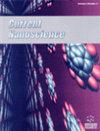Application of Silicon Nanowires
IF 1.5
4区 材料科学
Q4 BIOTECHNOLOGY & APPLIED MICROBIOLOGY
引用次数: 0
Abstract
:: Silicon Nanowires (SiNWs), a novel category of nanomaterials, exhibit several outstanding properties, including superior transistor performance, quantum tunneling effects, and remarkable electrical and optical capabilities. These properties are expected to contribute significantly to the development of future nanodevices, such as sensors and optoelectronic components. The potential for device miniaturization with SiNWs is based on their ease of monocrystallization. This leads to a reduced rate of hole-electron complexes and their extensive specific surface area that promotes boundary effects, thereby diminishing conductivity. Characterized by unique structural attributes, SiNWs hold promise for a wide range of applications in various sectors. To date, multiple methods have been established for SiNW fabrication, including solgel, electrochemical, laser ablation, chemical vapor deposition, and thermal vapor deposition techniques. Subsequently, the focus has shifted to the application of SiNWs in electronics, energy, and biomedicine. SiNWs are instrumental in producing high-performance electronic devices, such as field-effect transistors, sensors, and memory units. They also exhibit outstanding photovoltaic properties, making them suitable for high-efficiency solar cell and photocatalyst production. Additionally, SiNWs are poised to make significant contributions to biomedicine, particularly in biosensors, drug delivery systems, and tissue engineering materials. This article provides a concise review of the current status of SiNWs in electronics, sensing devices, and solar cell applications, and their roles in high-performance transistors, biosensors, and solar cells. It concludes with an exploration of the challenges and prospects for SiNWs. In summary, the unique attributes of SiNWs establish them as a versatile nanomaterial with broad applicability. This review offers a comprehensive overview of SiNW research and theoretical insights that may guide similar studies. The insights into recent SiNW research presented here are intended to inform future applications and investigations involving these nanomaterials.硅纳米线的应用
::硅纳米线(SiNWs)是一种新型纳米材料,具有多种优异特性,包括卓越的晶体管性能、量子隧道效应以及非凡的电学和光学能力。这些特性有望极大地促进未来纳米器件(如传感器和光电元件)的发展。SiNW 易于单晶化,因此具有器件微型化的潜力。这导致了空穴-电子复合率的降低,而其广泛的比表面积会促进边界效应,从而降低导电性。SiNWs 具有独特的结构属性,有望在各个领域得到广泛应用。迄今为止,已有多种方法用于制造 SiNW,包括溶胶、电化学、激光烧蚀、化学气相沉积和热气相沉积技术。随后,人们将重点转移到 SiNW 在电子、能源和生物医学领域的应用上。氮化硅薄膜在生产高性能电子器件(如场效应晶体管、传感器和存储单元)方面发挥着重要作用。它们还具有出色的光电特性,适合生产高效太阳能电池和光催化剂。此外,SiNW 还将为生物医学做出重大贡献,特别是在生物传感器、药物输送系统和组织工程材料方面。本文简要回顾了 SiNW 在电子、传感设备和太阳能电池应用中的现状,以及它们在高性能晶体管、生物传感器和太阳能电池中的作用。报告最后探讨了氮化硅薄膜面临的挑战和发展前景。总之,SiNW 的独特属性使其成为一种具有广泛适用性的多功能纳米材料。本综述全面概述了 SiNW 的研究和理论见解,可为类似研究提供指导。本文介绍的有关 SiNW 最新研究的见解旨在为未来涉及这些纳米材料的应用和研究提供参考。
本文章由计算机程序翻译,如有差异,请以英文原文为准。
求助全文
约1分钟内获得全文
求助全文
来源期刊

Current Nanoscience
工程技术-材料科学:综合
CiteScore
3.50
自引率
6.70%
发文量
83
审稿时长
4.4 months
期刊介绍:
Current Nanoscience publishes (a) Authoritative/Mini Reviews, and (b) Original Research and Highlights written by experts covering the most recent advances in nanoscience and nanotechnology. All aspects of the field are represented including nano-structures, nano-bubbles, nano-droplets and nanofluids. Applications of nanoscience in physics, material science, chemistry, synthesis, environmental science, electronics, biomedical nanotechnology, biomedical engineering, biotechnology, medicine and pharmaceuticals are also covered. The journal is essential to all researches involved in nanoscience and its applied and fundamental areas of science, chemistry, physics, material science, engineering and medicine.
Current Nanoscience also welcomes submissions on the following topics of Nanoscience and Nanotechnology:
Nanoelectronics and photonics
Advanced Nanomaterials
Nanofabrication and measurement
Nanobiotechnology and nanomedicine
Nanotechnology for energy
Sensors and actuator
Computational nanoscience and technology.
 求助内容:
求助内容: 应助结果提醒方式:
应助结果提醒方式:


